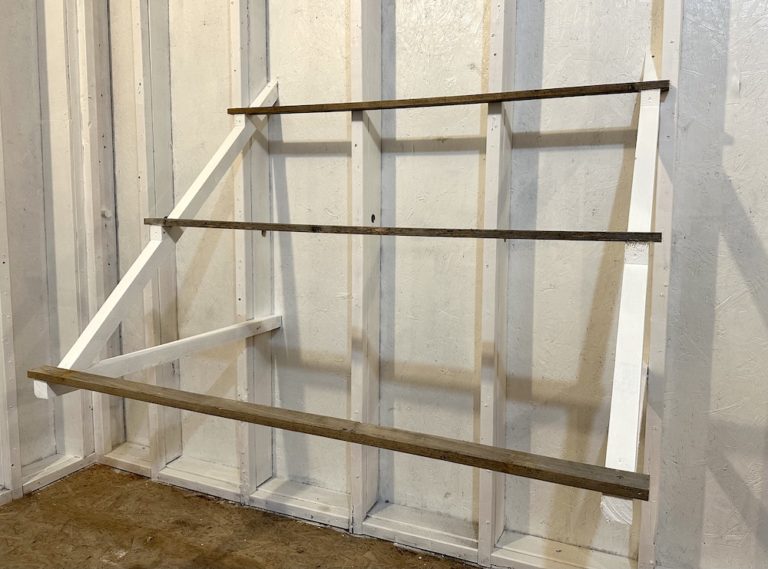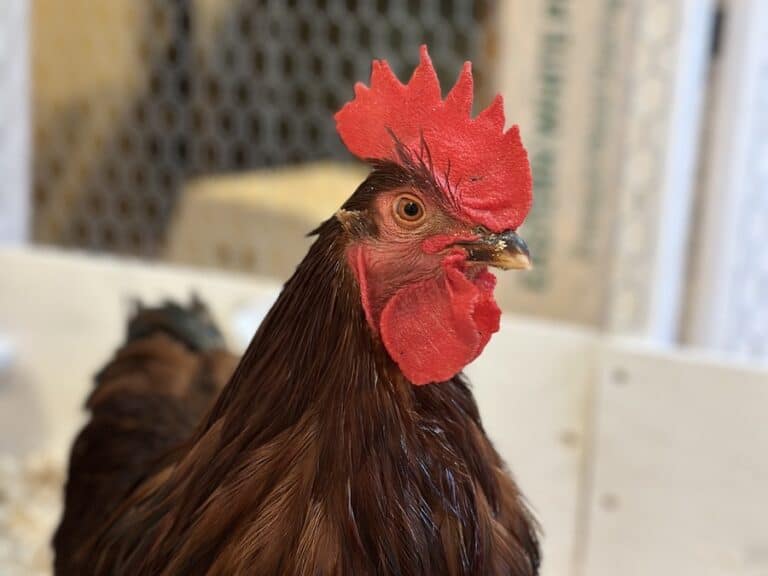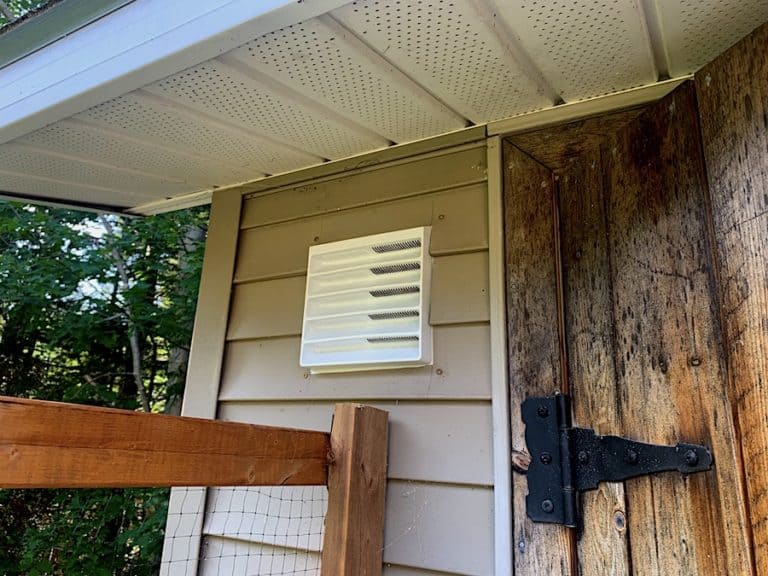How To Introduce New Chickens To Your Flock

Expanding your backyard chicken flock can be an exciting experience for any chicken owner. However, introducing new chickens may not always go as expected. This can be a stressful time for your hens and can disrupt their pecking order. On top of that, new chickens can potentially bring parasites and diseases into your coop, putting the health of your entire flock at risk. To avoid unnecessary stress and maintain the well-being of your hens, it is important to learn how to introduce new chickens to your flock safely and effectively.
In this article, we will discuss how to successfully integrate new chickens into your flock by understanding flock dynamics, quarantine procedures, gradual introduction techniques, and monitoring and troubleshooting strategies.
Disclaimer: This article includes affiliate links. If you click one of them, we may receive a small percentage of the sale at no extra cost to you. Thank you for your support!
Understanding Flock Dynamics

When you introduce new chickens to an existing flock, it’s important to consider the social hierarchy within the coop. Chickens have a natural pecking order to establish dominance and submission, which helps maintain peace and minimize conflicts among the flock. Understanding this dynamic can be beneficial before introducing new members.
Establishing The Pecking Order
In the chicken world, the pecking order is a hierarchical system where each chicken knows its place. The dominant birds have priority access to resources such as food and nesting spots. Lower-ranking chickens yield to higher-ranking ones, establishing a structured social environment. This order is not fixed and can change due to various factors, including the introduction of new chickens.
Chickens communicate their status through body language and vocalizations. Understanding these cues is important, especially when integrating new chickens. Signs of submission include avoiding eye contact, crouching, and allowing others to eat first. These interactions are different from bullying, which can take place when adding new chickens to your coop. Observing these behaviours aids in gauging the dynamics within the flock.
Disrupting The Pecking Order
When introducing new chickens, disruptions to the existing pecking order are inevitable. The established hierarchy can be challenged, leading to squabbles and fighting amongst one another to see who is the submissive hen and who comes out on top. To minimize these disruptions, introductions should be gradual, allowing the existing flock to adjust to the newcomers.
Introducing new chickens in a way that respects the existing hierarchy is a great way to prevent bullying and potential harm to new hens.
Integration Strategies Based On Flock Dynamics
A successful introduction involves strategic planning. Begin by placing the new chickens in a separate but adjacent space, allowing the existing flock to observe and acclimate to their presence and scent. This minimizes the shock of unfamiliarity and reduces the chances of aggressive behaviour.
Gradual face-to-face interactions are necessary. Allow the chickens to see each other through a barrier, such as a fence, before letting them share the same space. This controlled exposure helps to familiarize the birds with one another without direct confrontation.
When it’s time for physical interaction, monitor closely. Expect some pecking and posturing as the new hierarchy establishes itself. If aggression becomes excessive, consider separating the birds and retrying the introduction later. Patience is key during this process, as it may take days or even weeks for the pecking order to stabilize.
Quarantine Procedures For New Chickens

Before you introduce new chickens to your flock, it is necessary to implement a thorough quarantine process to protect the health of your existing birds. Quarantine serves as a preventive measure, minimizing the risk of potential diseases or parasites entering your coop.
Establishing A Quarantine Area
Begin by designating a separate area for quarantining new chickens. This space should be physically isolated from your existing flock to prevent direct contact. Ideally, use a different coop, pen, or section of the existing coop with its own food and water sources.
Quarantine duration varies but generally lasts for a minimum of two weeks. During this time, closely monitor the health of the new chickens for any signs of illness, parasites, or abnormalities. This isolation period allows you to identify and address potential health issues before introducing the new birds to the established flock.
Health Check For New Chickens
Perform a thorough health check on the new chickens upon arrival. Inspect their feathers, eyes, and beaks for any abnormalities. Check for signs of respiratory distress, such as wheezing or coughing, and observe their behaviour for lethargy or unusual disinterest in food. Watch their stool and look for blood, strange colours and odours, worms and diarrhea. A keen eye during this initial assessment aids in the early detection of health issues.
Preventing Disease Transmission
Disease transmission is a major concern when introducing new chickens. Even seemingly healthy birds can carry diseases such as Marek’s, which can wipe out entire flocks if your hens are unvaccinated
To prevent the spread of diseases, practice proper sanitary measures. Wash your hands thoroughly between handling different groups of chickens, and use dedicated tools and equipment for each group to avoid cross-contamination.
Regularly clean and disinfect the quarantine area to reduce the risk of parasites or pathogens lingering. This not only protects your existing flock but also ensures the well-being of the new chickens during their adjustment period. It is also a good idea to treat new hens for coccidiosis and worms as a preventive measure.
How To Gradually Introduce New Chickens

When introducing new chickens to an existing flock, it’s important to have a strategic and gradual approach to minimize stress and potential conflicts. You can achieve this through controlled observation, face-to-face interactions with barriers, supervised direct interactions, and maintaining a watchful eye. A well-executed approach leads to minimized stress and a peaceful environment in your coop.
Observation Through Barriers
Begin by placing the new chickens in a separate area adjacent to the existing flock. This allows the birds to see and hear each other without direct contact. It’s an essential step in familiarizing them without the risk of immediate aggression.
As the chickens observe one another through a barrier, they become accustomed to each other’s presence. This controlled exposure lays the foundation for a smoother integration process.
Controlled Face-To-Face Interaction
Once the chickens are accustomed to each other’s presence, it’s time for controlled face-to-face interaction. This can be achieved by allowing them to share the same space while still keeping a physical barrier between them, such as a fence or dog crate.
This controlled introduction encourages the chickens to establish a level of comfort with the new flock members. It’s common to observe initial pecking and posturing during this phase as they start to establish a new pecking order.
When we initially acquired new chicks, we housed them in a nearby brooder. Because we bought them from a hatchery instead of hatching them under one of our existing hens, it was essential for us to keep them separated until they were approximately nine weeks old.
When it came time to introduce new chickens to our flock, we did not have a separate fenced-in area in our coop to slowly integrate them. Instead, we put a dog crate inside the coop. We left the pullets in the crate for around two days before letting them out for supervised interactions. This step is necessary to ensure that your hens do not attack or cause harm to the younger pullets.
After a few days of supervised interactions, we removed the dog cage and fully integrated the younger hens into the flock.
Supervised Direct Interaction
After successful controlled interactions, it’s time for supervised direct interaction. Allow the new and existing chickens to share the same space without a barrier, but closely monitor their behaviour. This stage requires patience and careful observation to ensure a smooth integration process.
Expect some degree of pecking and squabbling as they establish their social structure. However, intervene if aggression becomes excessive to prevent injuries or prolonged stress.
Maintaining A Watchful Eye
Even after direct interaction, it’s crucial to maintain a watchful eye on the flock dynamics. Continue observing their behaviour for signs of aggression or distress. It’s not uncommon for adjustments in the pecking order to occur over several days or even weeks.
Monitor the new chickens’ health during this period. Stress from integration can make them more susceptible to illnesses. Ensure they are eating, drinking, and behaving normally to ensure their well-being.
Monitoring Your Newly Integrated Flock

Introducing new chickens to your existing flock is an ongoing process that requires monitoring and proactive troubleshooting to address potential issues.
Regularly observe flock behaviour, address signs of stress promptly, intervene in cases of persistent aggression, monitor the health of new chickens, and gradually expand their living space. These practices contribute to a smooth integration process, fostering a harmonious environment in your coop
Observing Flock Behavior
Once new chickens are integrated, closely observe the entire flock’s behaviour. Pay attention to any signs of aggression, excessive pecking, or bullying. Normal pecking order adjustments may occur, but persistent aggression needs intervention.
Ensure all chickens have access to food and water. Competition for resources can lead to stress and conflicts. If you notice a particular chicken being consistently denied access, consider providing multiple feeding and watering stations.
Checking For Signs of Stress
Stress is a common concern during the integration phase. Monitor the new chickens for signs of stress, such as reduced appetite, lethargy, or feather-picking. Stressed chickens are more susceptible to illnesses, so addressing stress promptly is crucial.
Provide hiding spots within the coop or outdoor area for new chickens to retreat if needed. This offers a sense of security and reduces the likelihood of prolonged stress.
Addressing Persistent Aggression
While some pecking is normal, persistent aggression requires intervention. In case one particular hen is consistently bullying and acting aggressively toward new hens, you can temporarily isolate the bully for a few days and then reintroduce it to the flock. This will cause the bully hen to lose its position in the pecking order and encourage it to behave and stop harassing the other hens.
Consider rearranging the coop or adding distractions like hanging treats and flock blocks to redirect their attention and energy.
Monitoring New Chickens’ Health
Continue monitoring the health of the new chickens even after integration. Stress and the adjustment period can make them more susceptible to illnesses. Watch for symptoms like sneezing, coughing, or changes in feces.
If you notice any symptoms or signs of illness, be sure to isolate the chicken promptly. Consult with a veterinarian for a proper diagnosis and treatment plan.
Introduce New Chickens In Groups
Introducing new chickens to your existing flock one at a time is not recommended. This can cause increased bullying and difficulties in establishing social dynamics. To ensure a smoother integration process and the well-being of both the new and existing chickens, it is advisable to introduce multiple chickens at the same time.
Here are some things to watch out for if you choose to introduce a lone chicken into your flock.
Loneliness And Stress
Chickens are social animals and thrive in the company of their own kind. Introducing a solitary chicken can lead to feelings of loneliness and stress. Chickens establish a pecking order, and a lone newcomer may struggle to integrate without the support of companions.
Increased Bullying Risk
Without other chickens to share the stress and attention, a lone newcomer may become a target for bullying. The established members of the flock may be more likely to single out and peck at a lone chicken, making the integration process more challenging.
Difficulty Establishing Hierarchy
The pecking order is crucial for maintaining harmony within a chicken flock. Introducing multiple chickens allows them to establish a natural hierarchy through interactions and social cues. A lone chicken may struggle to fit into this hierarchy, leading to potential conflicts.
Increased Risk Of Rejection
Introducing new chickens as a group is more effective than introducing a single chicken. When a single chicken is introduced, it may face more resistance from the existing flock, making it difficult to be accepted. When introduced as a group, chickens can share attention and integrate more smoothly into the flock.
Easier Integration Process
Bringing in a group of chickens simultaneously allows them to form their own dynamics and pecking order. This simultaneous introduction can distribute the attention and potential stress across multiple newcomers, making the integration process more manageable for everyone involved.






